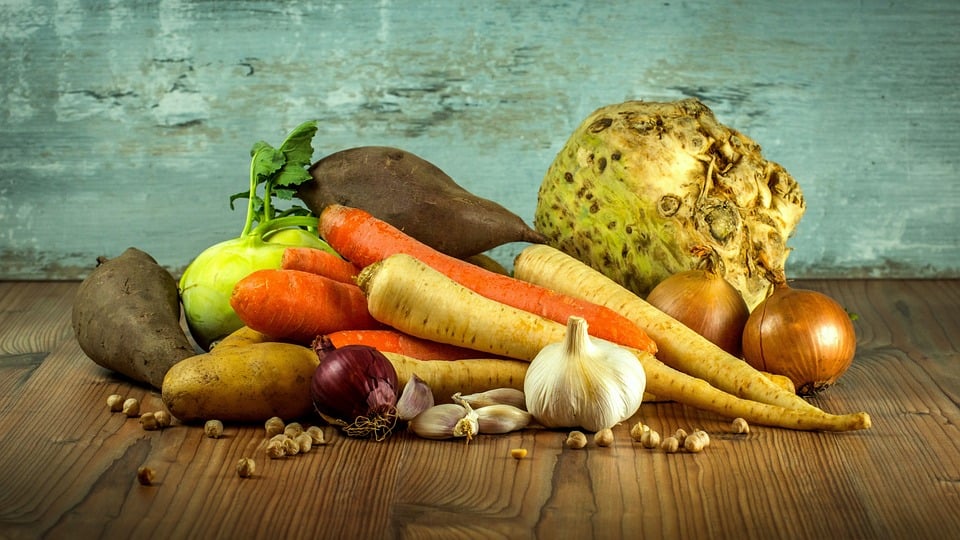24 Must-Have Flowers To Sow Or Plant In April
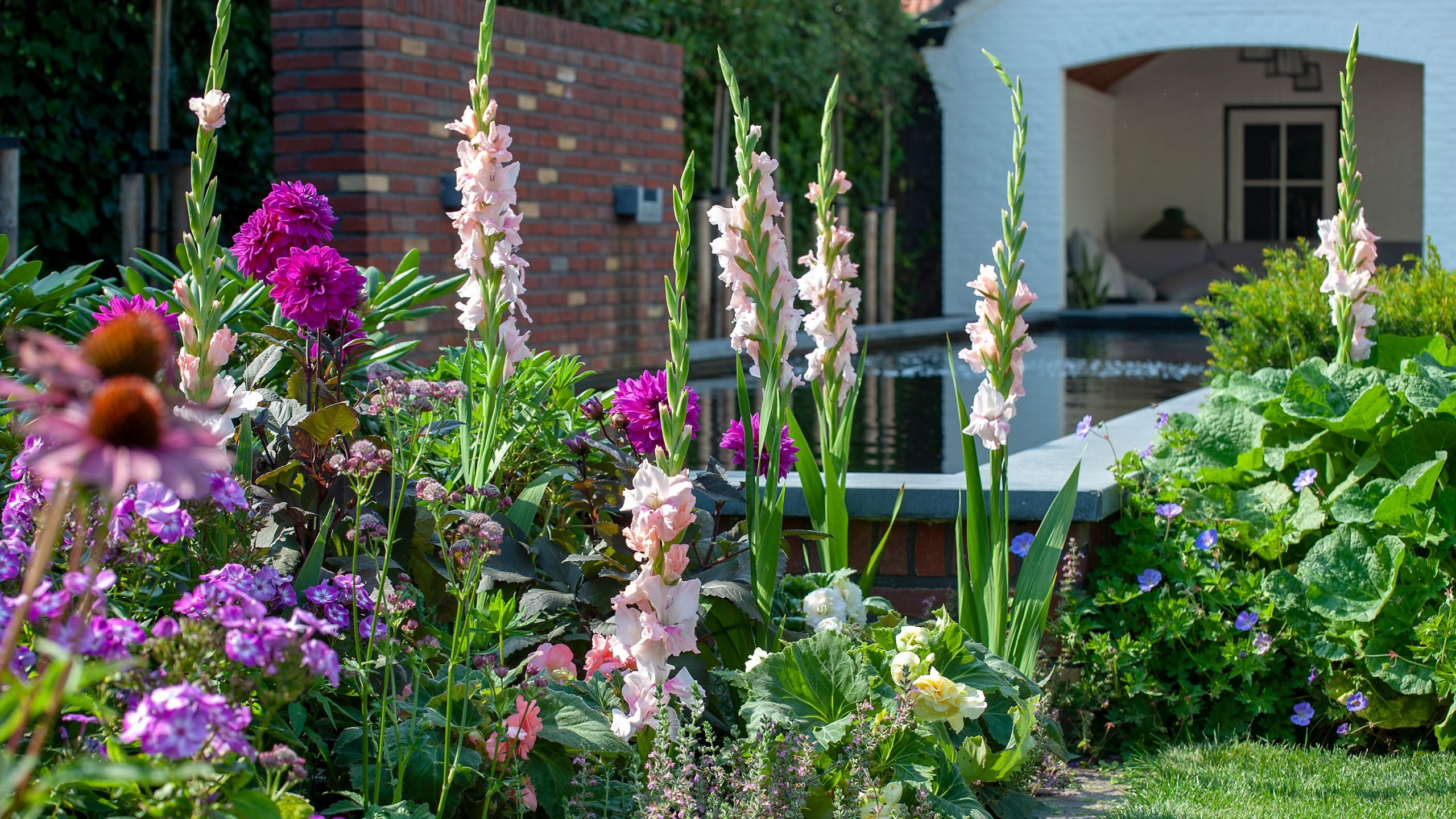
Table of Contents
Are you planning to grow flowering plants in your garden in the month of April? As April marks the beginning of spring, it is the perfect time to kickstart your gardening. In this article, we are exploring numerous varieties of flowers to plant in April.
No matter whether you are looking to grow plants in a container or in a garden, we have made the list to suit all your requirements. When you are looking for flowering plants that can be grown in April, you are automatically required to do research. There are certain plants that require the utmost care, whereas others require no maintenance at all.
You can choose between a variety of cultivars that are strictly ornamental and those that are also edible. Explore everything there is to know about the plants that could be grown in the month of April, about caring for them, the particularities of the cultivars, and more by scrolling down this article.
Stunning Plants to Sow or Plant in April
1. Zinnia
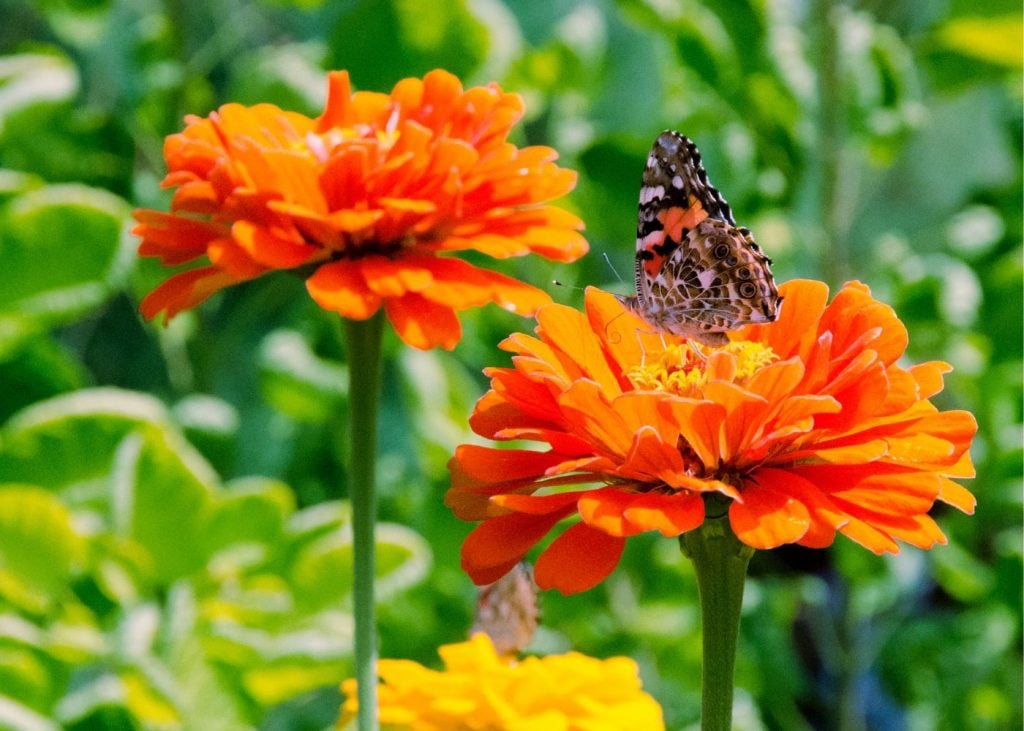
Zinnias are popular for the stunning, colourful blooms they produce and can add an ornamental touch to your garden. Apart from providing your garden with a showy display, these plants are very easy to care for, which makes them a gardener’s favourite. You can choose from a variety of plants in this species, as they come in various shapes and colours. To get the most out of these cultivars, all you need are just two things: well-drained soil and a good amount of sunlight. It’s recommended to deadhead the flowers right after the blooming season to increase the productivity of Zinnias.
2. Marigold
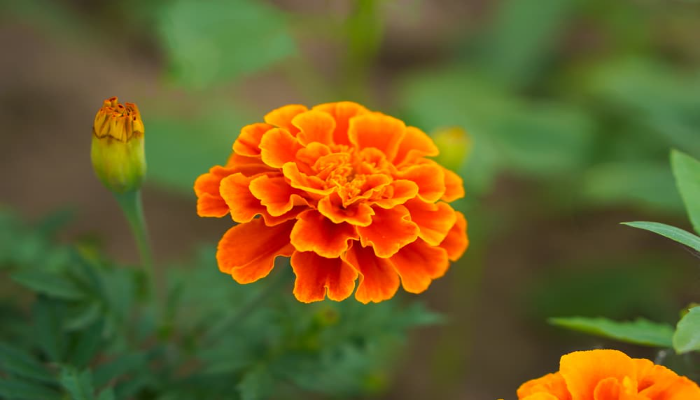
The best cultivars are the ones you can easily maintain, and that produce very good, attractive blooms. Because of these reasons, marigold is considered an evergreen, ever-favorite plant for gardens. These plants come in a variety of sizes. You can get a dwarf plant or a plant that can grow up to a height of two feet. They produce stunning blooms of orange, yellow, purple, or red colors. Depending on your garden, you can choose the best-suited colour of bloom and start growing it. We recommend you plant multiple colours of marigolds together; this will add a blast of colour and a stunning visual to the garden. When it comes to watering these plants, make sure to water them every now and then during the summer, but don’t leave the soil soggy.
3. Cosmos
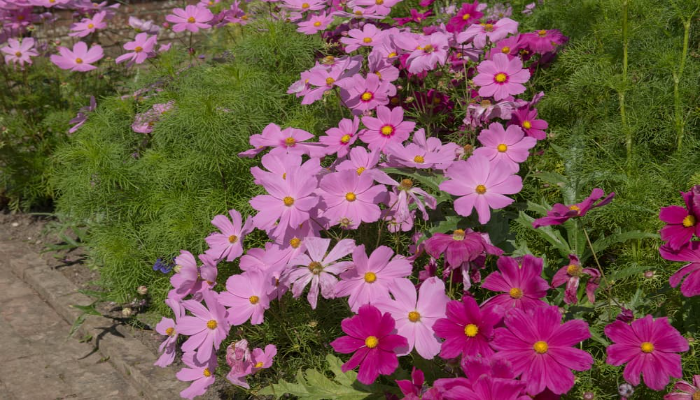
The flowers produced by Cosmos resemble daisies, and they come in pink, white, purple, and red shades. These low-maintenance, annual flowers will give your garden a dreamy look because of the beautiful blooms they produce. They have feathery foliage, and the flowers are produced on long stems. These plants are easy to care for and can easily be grown in your gardens or in containers as per your needs. These plants demand well-drained soil and good sunlight availability to produce the best results. You can also use cosmos as temporary fillers among other cultivars, which will naturally give your garden a pop of colour.
4. Comfrey
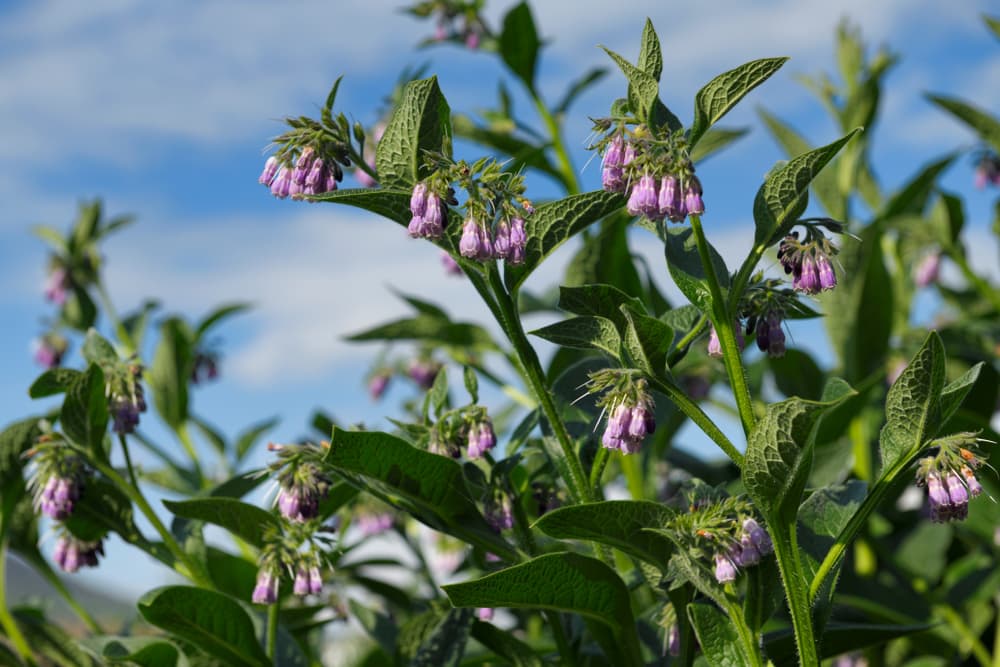
Wonder whether you can have a plant that is ornamental as well as organic? Try comfreys. These plants produce beautiful flowers in purple, white, and blue shades. These cultivars can grow up to 5 feet tall and are known for their long, slender foliage. Comfreys are helpful for healing your skin and small wounds, which makes them multi-useable in nature.
5. Lavender
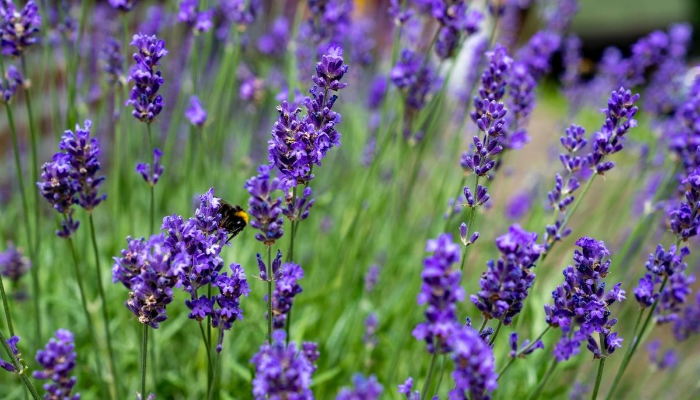
Lavenders are known for their beautiful flowers and heartening fragrance. If you are looking for the best varieties of flowers to plant in April for your garden, lavender must be on your list. They belong to the Mint family and have therapeutic benefits. It has been proven that lavender has positive effects on people with insomnia, skin problems, chronic blood pressure, and high heart rates. Lavenders are loved by bees, so there will be a spot in your garden that attracts a lot of butterflies and other pollinators.
6. Yarrow
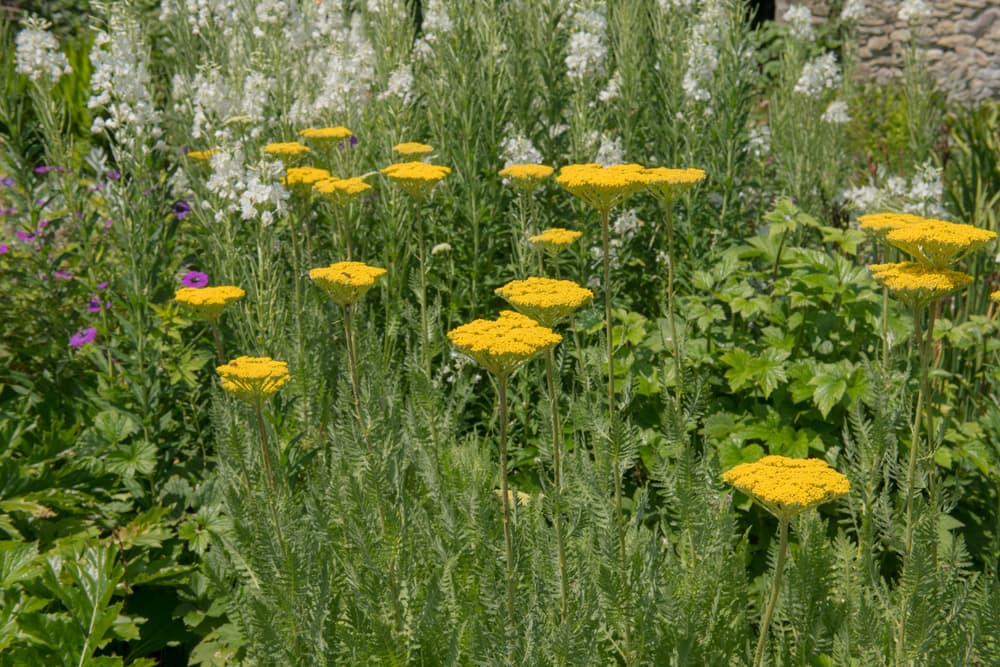
Yarrows are low-maintenance, perennial, and drought-tolerant plants that will suit your gardens. Yarrows are plants you can consider growing in the month of April. They produce flowers of a variety of colours, ranging from yellow to pink to white. These flowering plants are also known for attracting a variety of insects, which will keep your garden lively. Yarrows can grow to variable heights depending on the amount of water you provide them. Basically, during the rainy season, they tend to grow taller, and during the dry period, they can be seen as having less height. The average germination period of yarrow seeds is around 45 days, so patience is the key!
7. Echinacea
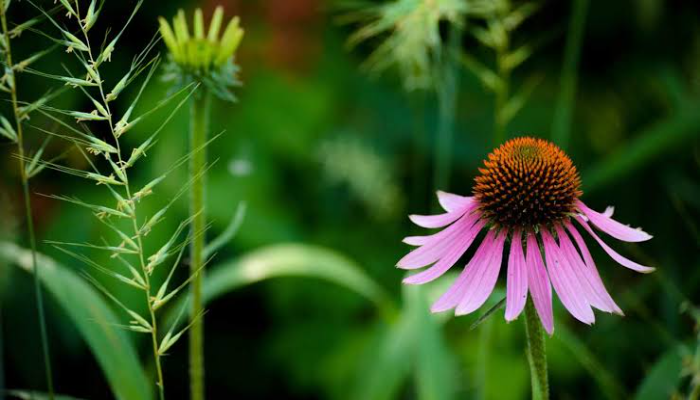
Echinacea—you might be familiar with this name. There are chances you’ve come across this name either in a garden or a grocery store under the name ‘dried tea.’ These plants generally produce flowers in pink or purple shades that usually protrude from a black or brown cone. This part of the plant usually produces seeds eventually. It is recommended to sow echinacea seeds during the month of April. For best results, sow the seeds 14 inches deep into the soil and wait for germination.
8. Amaranthus
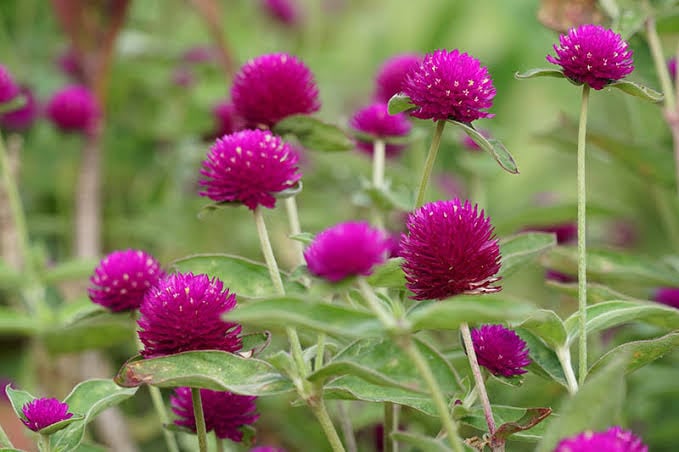
From a total of around 70 species around the world, only about a dozen species of amaranthus are cultivated around the world. The reasons for people to choose amaranthus as a cultivar are multiple. They are grown as ornamental plants and for flowers by gardeners, as well as for their grains and other edible needs. This proves why amaranthus is an evergreen favourite among gardeners. These plants produce spectacular-looking flowers that will draw a lot of attention to your garden. During the month of April, you can try sowing the seeds of amaranthus indoors and moving them after the atmosphere gets warmer.
9. Nasturtium
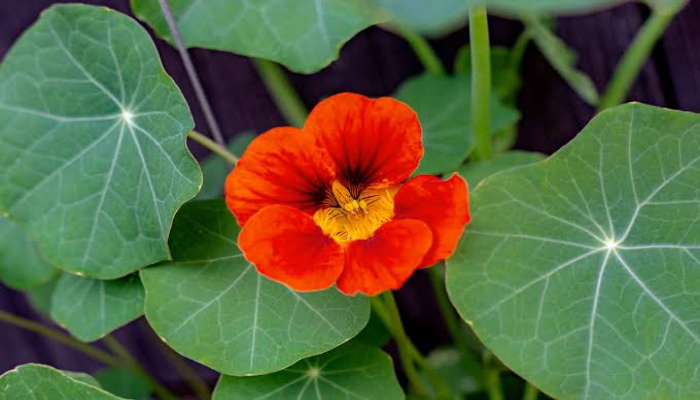
Flowers that are attractive and also edible always have a special place in gardens. Nasturtium is one such flower to plant in April. Nasturtium means ‘nose twister’ in Latin. The name came from the peppery taste of the flower, which was used as a substitute for pepper during World War 2. These cultivars can serve as a trap crop for your gardens and are an abundant source of vitamins too. We recommend you first clip the seeds using nail clippers and soak them in water overnight before sowing them, as their outer layer is very hard. Make sure to bury the seeds at least 1 inch deep in the soil, as darkness will accelerate germination.
10. Chocolate Flower
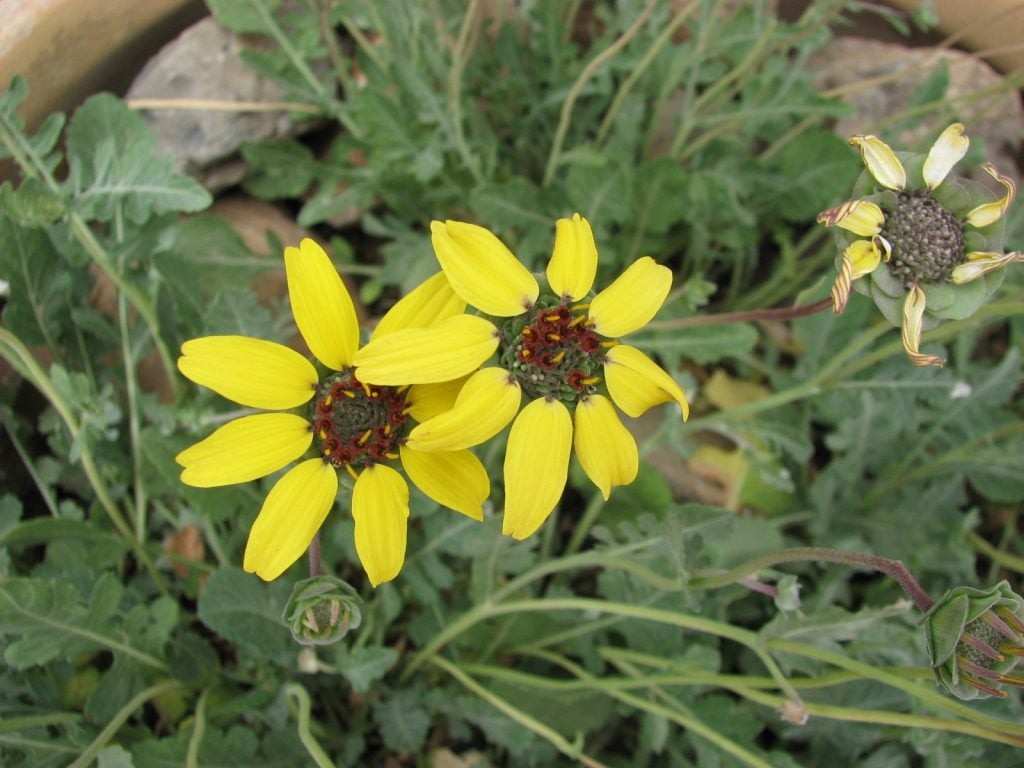
Are you a chocolate lover? What do you think about having flowers that smell like chocolate in your garden? Sounds like a dream? Make it true by planting chocolate flower plants. These plants produce yellow flowers daily and are perennial in nature. If maintained properly, these plants will continue growing over the years, dropping seeds to spread vastly. Chocolate flowers are low-maintenance plants that can be grown easily on wet grounds as they are drought-tolerant by nature. While sowing, you can cover the seeds lightly with soil and water them until germination.
11. Sunflower
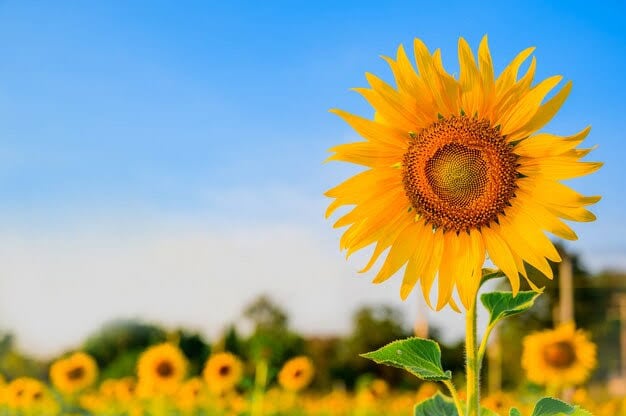
Sunflowers are considered an evergreen classic. These vibrant, large yellow flowers can give your garden a refreshing look. If you are a beginner and are looking for low-maintenance flowers to plant in April, this is your pick. Sunflowers can be recognised even from a long distance due to their prolific blooms. They produce large, daisy-like flowers with circular blossoms surrounding a central disc. As the name implies, they require sunlight in abundance and should be placed on well-drained soil. But these plants become drought-tolerant once established. Make sure to water adequately during the summer for the best results.
12. Poppy
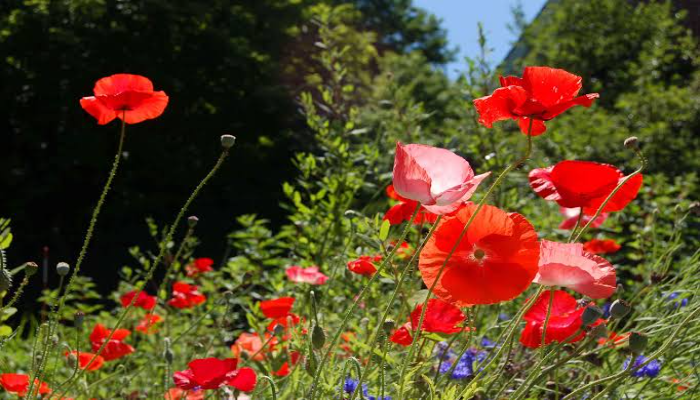
Poppies are becoming a common sight in gardens because of their attractive flowers. These plants also attract bees and butterflies to your garden, making the place look active. Remember those poppy seeds that you included in your breakfast bagel? They are produced by these same plants! You can either choose to consume them or save them and sow them during the coming year. Make sure to plant the seeds 18 inches deep for the best results.
13. Sweet Peas
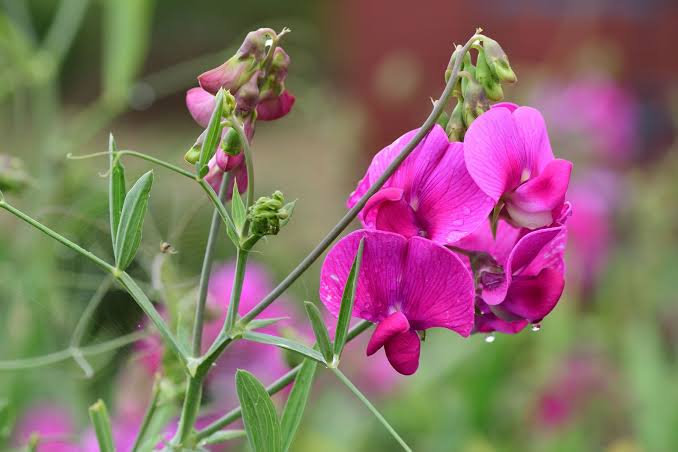
Most of the time, gardeners choose the kind of flowers that help them add a splash of colour to their garden. Sweet peas produce flowers of variable hues ranging from delicate to vibrant tones and will surely act as a display for your garden. These plants are easy to care for and produce long-lasting blooms, making them a favourite among gardeners. It is recommended to do some research to find out the best sweet pea species for your locality. These plants require at least 6 hours of direct sunlight to produce the best results.
14. Salvias
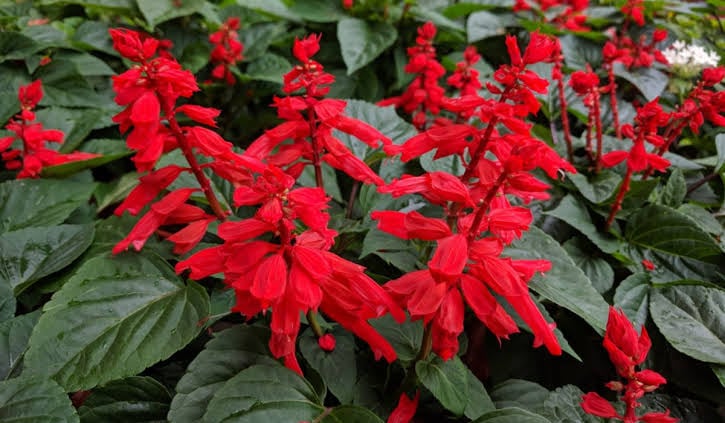
Salvias are plants that produce long blooms to add beauty to your garden. They are perennial plants you could consider growing in the month of April. The reason we recommend you grow salvias is that no matter what soil type you have, they will easily fit. You could consider growing them in the month of April. The reason we recommend salvias is that no matter what soil type you have, they will easily fit it. These cultivars have long flowering times and are available in a variety of colours. If you are looking for flowering plants that last long enough to keep your garden colourful, you must consider salvias. With proper pruning right after the flowering season, you can keep the plant in good shape for a long time.
15. Rudbeckia
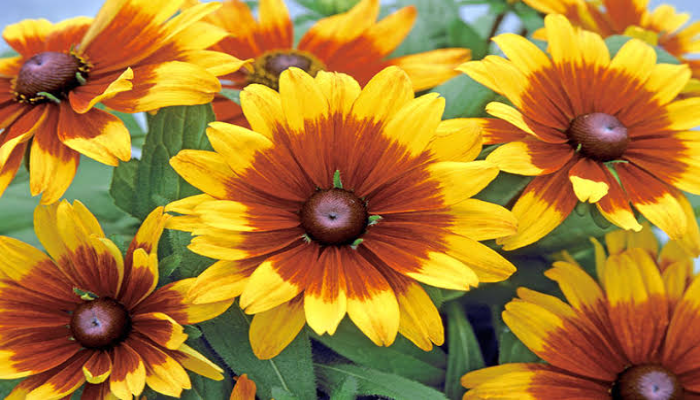
Known by the names ‘Black-Eyed Susan’ or ‘Brown-Eyed Susan’, Rudbeckias are low-maintenance plants that produce attractive flowers. You can choose from a wide variety of plants when it comes to Rudbeckias. They come in a variety of colours, with different colours for the centre cones too. These plants are easy to grow, both from seeds and in a pot, and are a great attraction for pollinators. These plants should be planted at least 12 inches away from their neighbours, as they require more space to grow.
16. Astrantias
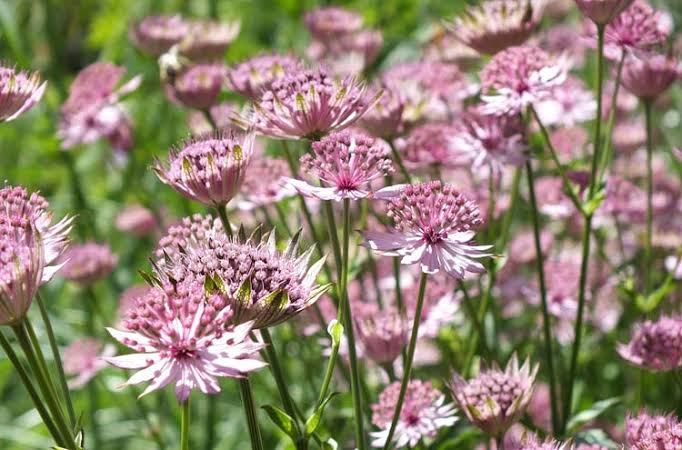
Astrantias are flowering plants that produce a stunning array of blooms in red, pink, and white colours. They have lush green foliage and colourful flowers protruding from long, straight stems. The flowers produced by astrantias are starry-shaped and make a stunning display. You can choose from a variety of colours when it comes to astrantias, ranging from white to red to burgundy and more. You might be familiar with astrantias, as they make excellent cut flowers and are often used in bouquets. Most soil types are suitable for these plants, and they grow best in partial shade.
17. Agastache
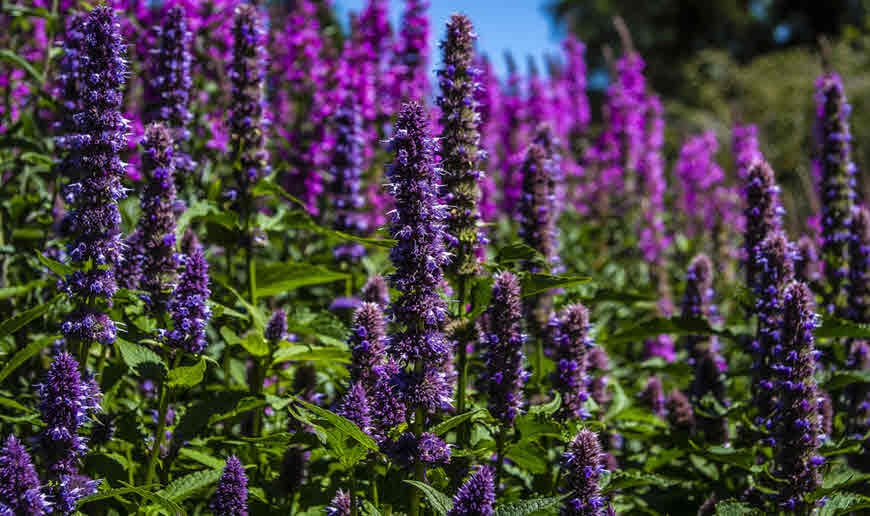
Here is another ornamental, multipurpose flowering plant if you are looking for flowers to plant in April for your gardens. Agastaches, also known as Anise Hyssop, is a popular flowering plant that attracts a lot of bees and butterflies. The best time to plant these cultivars will be anytime between March and May. If you sowed their seeds during this time, by the time of early autumn, you can move them to a permanent place to grow and get established. Agastaches produce beautiful blooms during the summer and will give a stunning look to the garden.
18. Hollyhock
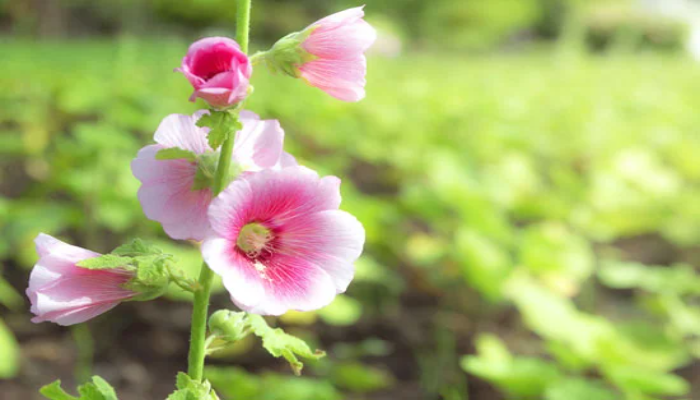
Large, beautiful blooms automatically enhance the beauty of the place where they grow. Hibiscus are one such popular plant, and you would have been familiar with them. Hollyhocks look much like hibiscus, as both plants belong to the same species. Hollyhocks produce large, stunning flowers of variable colours. These flowering plants can even grow up to 8 feet in height if handled with care. While sowing, make sure to press the seeds of the hollyhock firmly to the ground to make them germinate well after providing an adequate amount of water.
19. Verbena
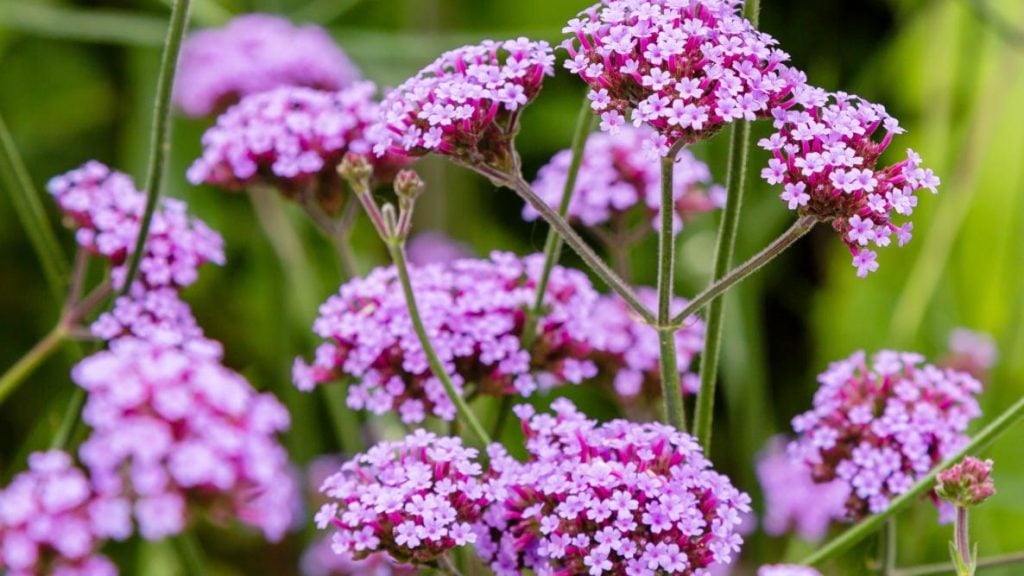
Verbena produces umbel flowers that can act as a habitat for parasitic wasps. These bugs will be extremely helpful for your garden as they can destroy pests. If your garden is also dedicated to growing vegetables, including verbenas will be a perk. You can start by sowing verbena seeds indoors by planting them 18 feet deep in the soil. The provision of a heat mat is recommended at this point to accelerate effective germination.
20. Korean Angelica
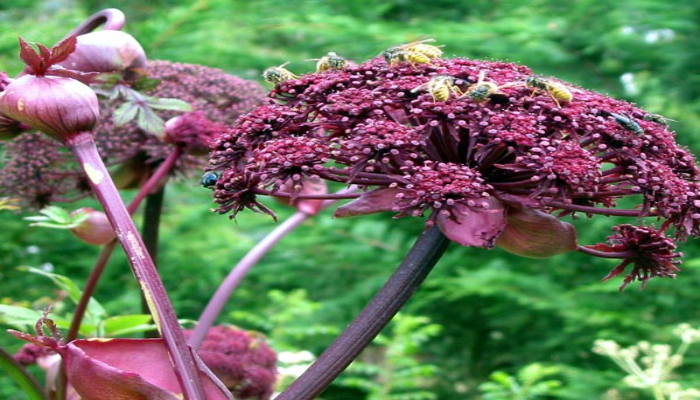
Add a touch of drama by planting Korean angelica in your garden. These plants produce stunning yet dramatic-looking flowers, adding to the beauty of the garden. They are perennial plants with tall flower stems and attractive foliage. Their leaves are partially green in colour and grow deeply divided up to 40 cm long, providing a stunning display. Korean angelicas are biennial in nature, which means they will flower every two years and then die. This means you will have to be consistent with sowing their seeds to keep their presence in the garden. These plants grow best when planted in full sun or partial shade in moist soil.
21. Calendula
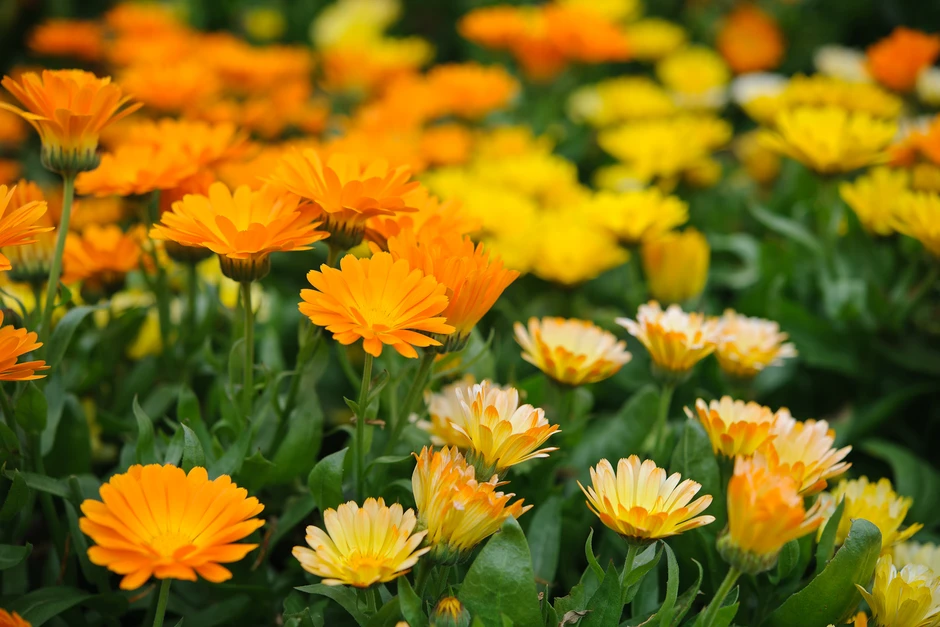
Calendulas are clearly a standout when it comes to flowers to plant in April. Unlike other flowers, calendula blooms are edible, and you can make delicious tea using them. You can also dry them to use as a natural dye. Calendulas belong to the daisy family and are also related to marigolds. Because of this, the plant shows similar features to both daisies and marigolds. During sowing, make sure to bury the seeds 12 inches deep in the soil. With the right amount of care and circumstances, the germination of seeds will be initiated within 6–8 weeks.
22. Cornflower
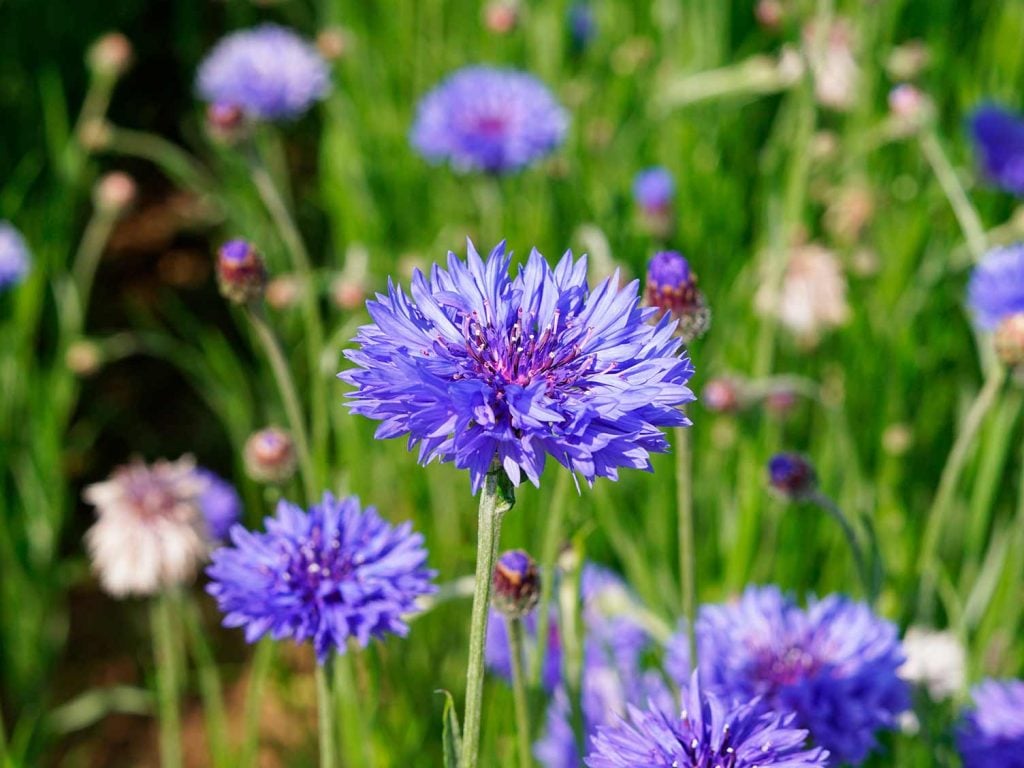
Speaking of lovely flowers to plant in April, consider having cornflowers in your garden. These plants produce beautiful flowers that add a vibrant touch to your garden. These flowers have the features of daisies and are generally easy to care for. You can select from a variety of colours, ranging from purple, white, blue, and pink, as they promise you a stunning display. Cornflowers can grow well in either full sun or partial shade. When it comes to the soil, these plants grow well in most soil types as long as they are well-drained. The provision of adequate air circulation will make the plant more immune to diseases.
23. Dill
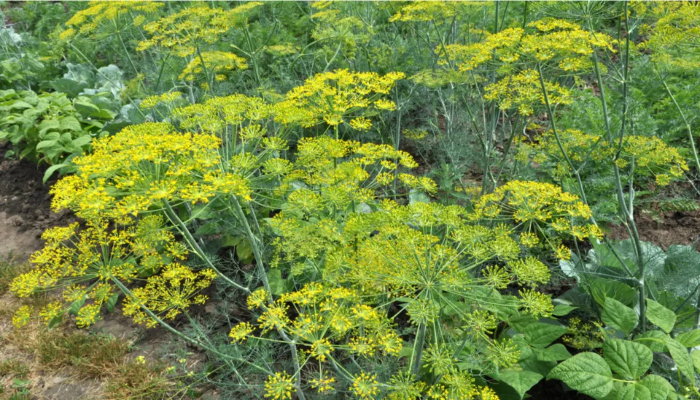
Dills are one of those flowering plants that come with attractive foliage as well as blooms. Parasitic wasps love the flowers produced by dill, which is another reason why you should consider this plant. Facilitating the dills to bloom well can help butterflies breed well in your garden. By the end of the flowering season, you can collect the seeds from these plants to produce more. While sowing, it is recommended to plant the seeds at least 14 inches deep in the soil.
24. Candytuft
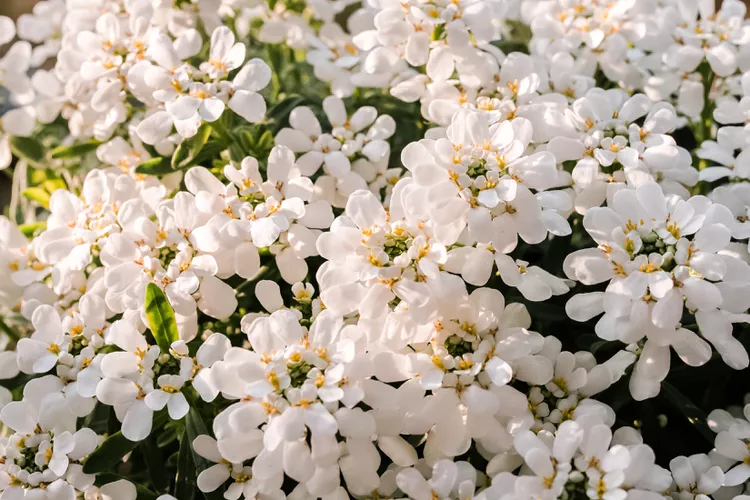
For beginners, easy-to-grow flowering plants are always a good recommendation for gardens. One such flowering plant is the candytuft. Candytufts are considered wildflowers, and they grow easily, even under variable conditions. If you are looking for flowering plants that don’t take months to grow, this plant is a great pick. Candytufts flower really fast and will flower in a few months. These plants are drought-resistant by nature and are easy to grow in well-drained soil as well. When it comes to planting them, it is recommended to scatter the seeds across the soil, letting them stay buried at least 14 inches deep for effective germination
End Note
April is a month when all the necessary criteria come together for growing flowering plants in a garden. Hence, it is good to make a list of plants you want to have in your garden and grab their seeds beforehand. We hope this article helped you learn about a good variety of plants you can consider growing in your garden. You can choose to either grow them directly using saplings or by sowing seeds. As the conditions are very good for the seeds to germinate quickly, you won’t have to wait too long before your garden starts to look all green and colourful.
With the right amount of planning and care, it is possible to keep your garden looking stunning and have flowers year-round.
Frequently Asked Questions
What Seeds Can I Plant in The Month of April?
You can choose from a variety of options when it comes to growing plants in the month of April. A few of the popular options are sunflowers, calendulas, sweet peas, etc. Depending on the geography of your place, the list of compatible plants will vary. Providing an adequate amount of sunlight and sowing the seeds in well-drained soil will yield better results.
Why Is April a Good Time to Plant Seeds?
As the month of April offers an average amount of sunlight, it is considered to be the best month to sow seeds to grow plants for your garden. It is recommended to check with your local gardener to learn more about your area and the kinds of cultivars that are better suited for it.
ISn’t It Late to Plant Flowering Plants in The Month of April?
Absolutely not. As the soil remains warm, it is the perfect time to sow most of the seeds this month. As the conditions are very suitable for the flowering plant to germinate quickly and start to nourish your garden in no time, it is recommended to start sowing during the month of April

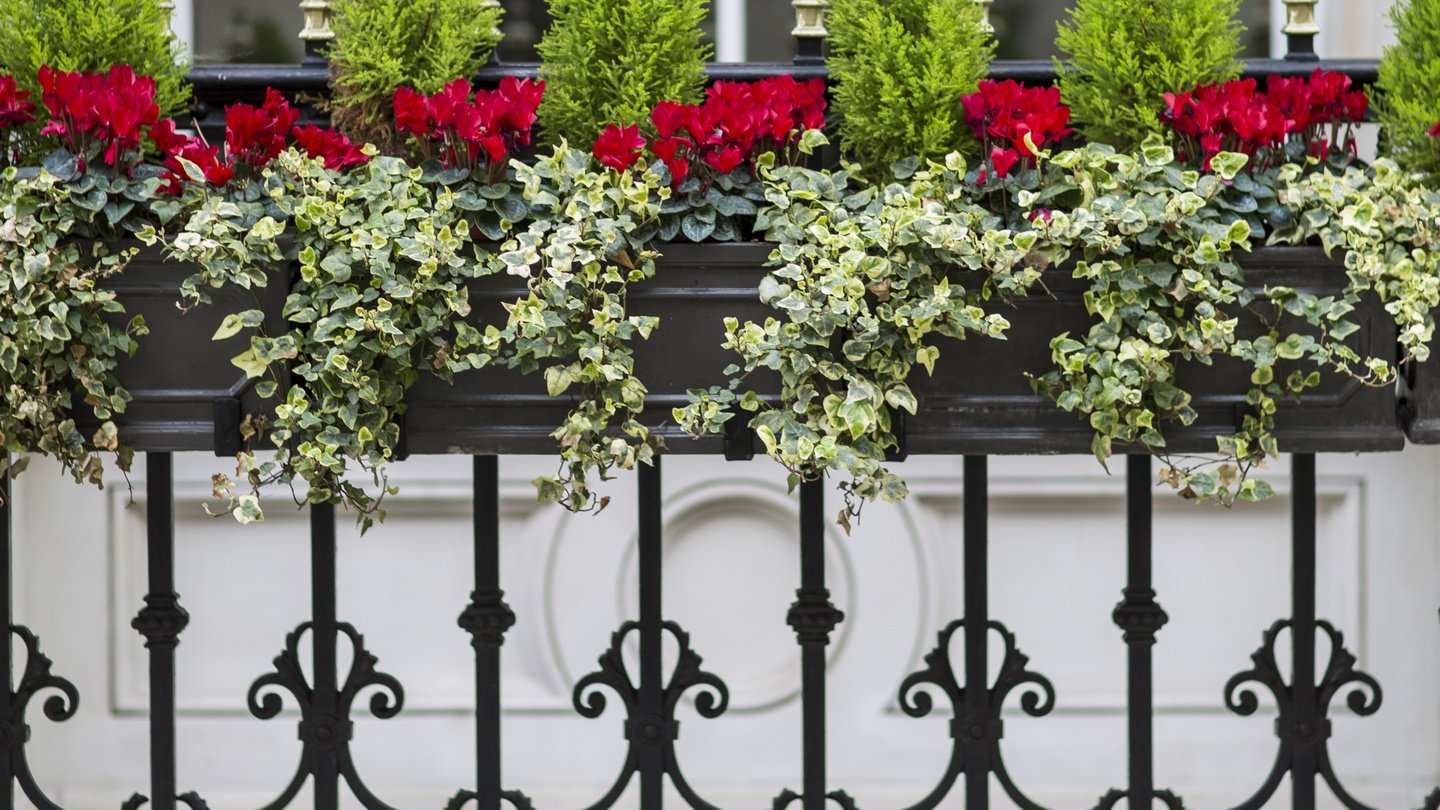
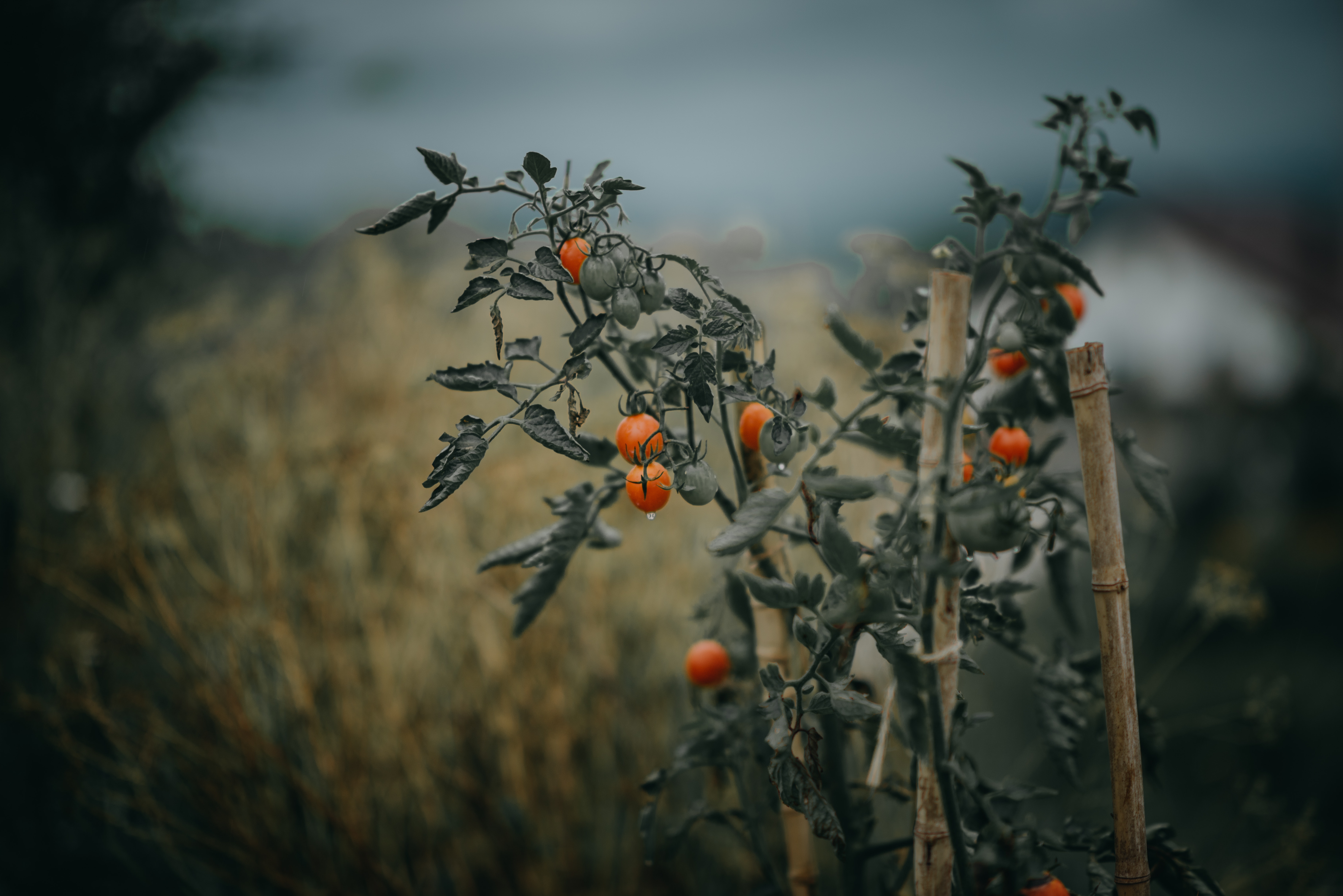

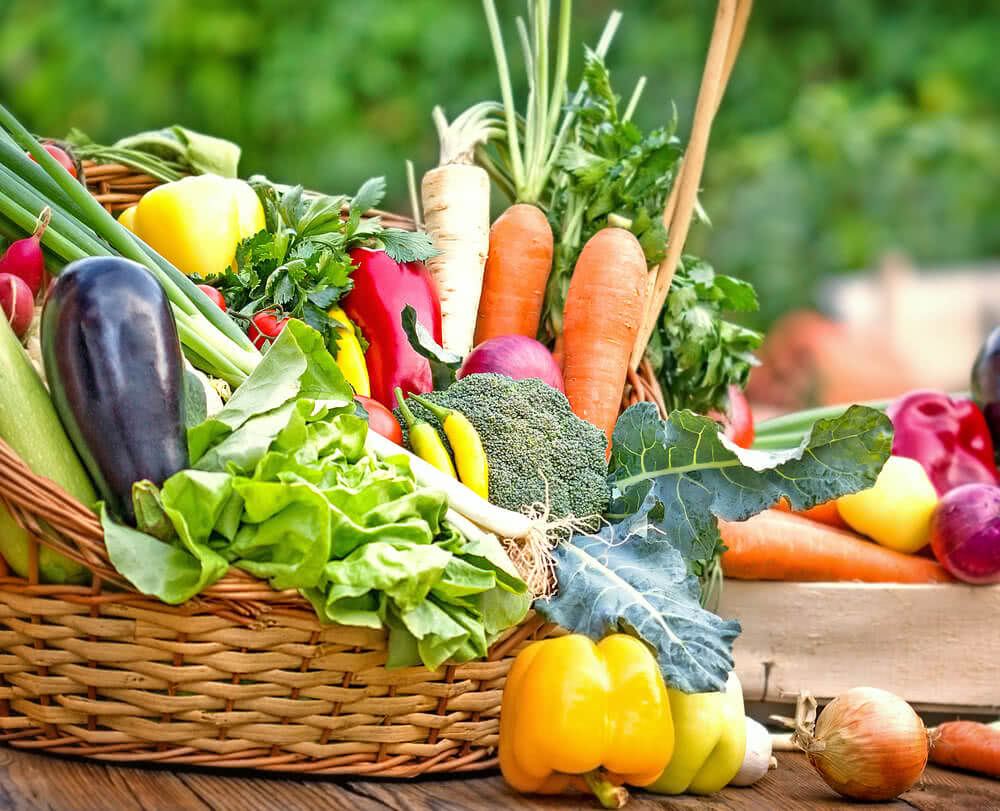
![The Top 10 Vegetables You Should Plant in August [UK]](https://staging.thearches.co.uk/wp-content/uploads/Vegetables-That-Can-Be-Planted-In-August.jpeg)
